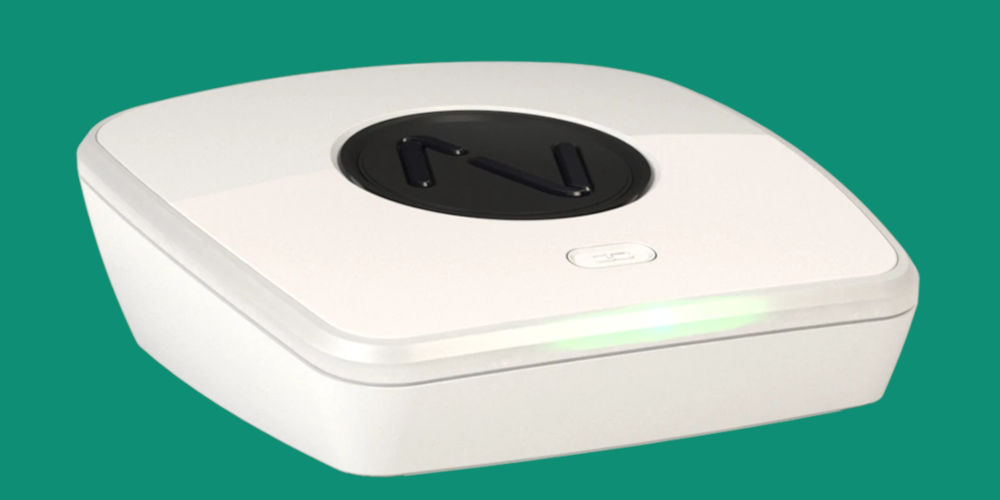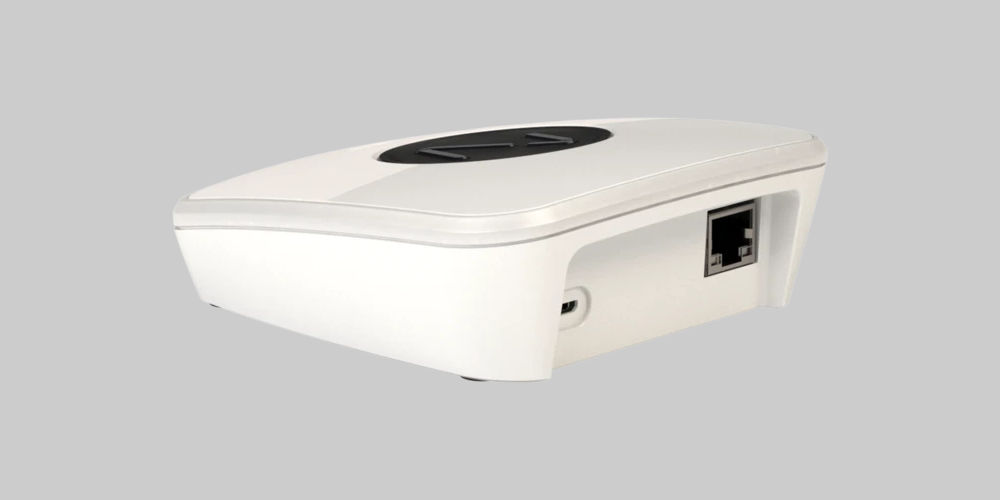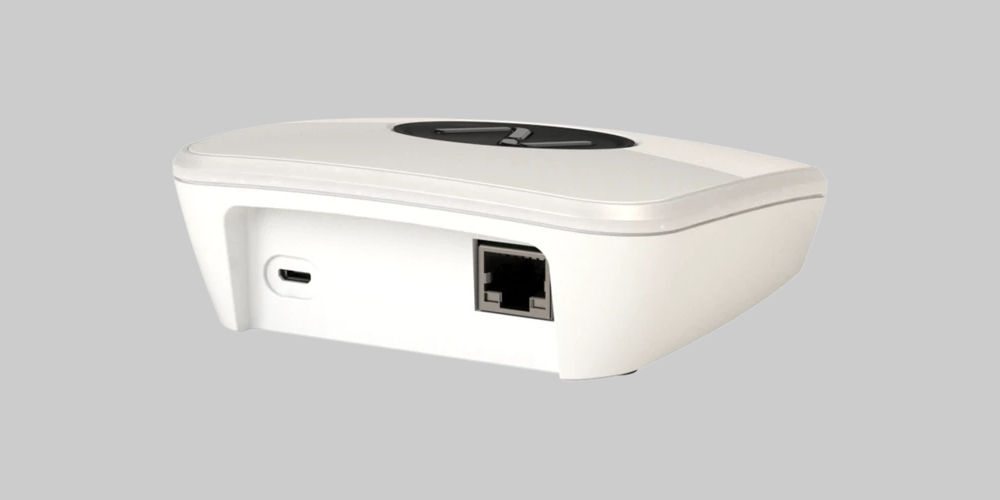Lightwave Link Plus LP2 review: Is it the ideal Hub?

At the heart of every Lightwave smart home system is a hub. The current version is the Lightwave Link Plus LP2, which despite its uneventful appearance, does most of the heavy lifting that keeps the system operating.
As a review of the Lightwave Link Plus, we will, of course, talk about Lightwave. However, this isn’t a review of the overall smart home system or how it compares to other DIY-friendly automation options. We’ve already written extensively about both.
The Link Plus can wirelessly control up to 256 devices from dimmers, power sockets, relays and radiator TRVs. It connects to your Wi-Fi router and so can be operated from anywhere with the internet.
The hub works with Amazon Alexa, Apple HomeKit, Google Home and an Android App, allowing you to control your system using multiple methods. You can even use IFTTT with Lightwave, but that’s getting ahead of ourselves!
As we explore the Lightwave Link Plus, you should develop a deeper understanding of what the Lightwave system is capable of and its limitations. 8/10
Pros
- Connect up to 256 Devices
- Control by Voice and App
- Plugs into any standard Wi-Fi router
Cons
- Requires internet connection
- Not backwards compatible
How attractive is the design?
Granted, the Lightwave LP2 Link Plus looks as exciting as your Wi-Fi router. I get it. So, it might seem slightly weird to want to discuss its design.
Unlike previous versions that are completely white, this new hub has a black insert on top, embossed with the company’s monogram. Made from plastic, it’s hard-wearing and has a minimal footprint.
On the rear, you’ll notice an Ethernet port, allowing you to connect the Link Plus to your Wi-Fi router. There’s also a power input. There is a small button on the top at the front. Underneath this button is a green light, matching the brand’s signature hue.
That’s pretty much how exciting the Link Plus looks. Thankfully, under the hood is some fantastic hardware that runs equally powerful software.

photo by Lightwave
What features does the L2 Link Plus offer?
Thankfully, what the Lightwave Link Plus enables you to do is far more exciting than the exterior may lead you to believe. As an essential part of the system, you need to pair any Lightwave devices with the Lightwave hub for it to work.
You can pair the Link Plus with up to 256 devices, which you can control or programme using the app or voice commands with your favourite AI assistant.
Lightwave offers a basic selection of smart home devices allowing you to automate the essential features in your home. They have products for heating, power, and lights. Also, they offer several relays, allowing you to automate blinds, external gates and even your garage door.
The hub sends and receives commands from devices. For example, it will tell your living room light switch to turn on. As the hub uses two-way communication, it knows the status of that device and if it has completed the action.
Another function of the Lightwave LP2 Link Plus hub is receiving your commands that it actions. You can control it using the Lightwave app or a virtual assistant like Google Assistant or Amazon Alexa. The devices even work with the Apple HomeKit ecosystem.
Regardless of your control method, these commands pass through the Lightwave servers before reaching your hub. So, you need a strong and stable internet connection to ensure your Lightwave system is always working.
As Lightwave use web servers, you can control your smart home system from anywhere, so long as you and the system both have internet. You can also pre-programme devices, meaning your home can automatically react.
Setting up your hub for the first time
Setting up your Link Plus is a three-step process:
- Connect the hub
- Pair your Lightwave devices
- Programme your system and create presets and scenes.
Start by connecting your L2 Link Plus hub to a spare LAN port on your Wi-Fi router using the included Ethernet cable. Next, plug in the power supply to the mains and attach the Micro USB connector into the socket on the back of the Link Plus.
The Link Plus will enter its start up sequence and will attempt to connect to the Lightwave server. While this happens, you’ll see a solid amber light. If the light turns green, the hub has an internet connection.
After the green light appears, your Link Plus is ready for set up with the Lightwave Link Plus App. You’ll need to download the free App from either the Apple Store or Google Play. Open the App and follow the instructions.
You can also use the Lightwave Web App to set up and control your Link Plus. The web platform is highly sophisticated and best for configuring devices and building scenes and automations.
Once your Link Plus is working, you can register multiple smartphones or tablets to control your Lightwave devices. Next, pair your Lightwave devices with the hub to include them in the system.
As you add devices to your Lightwave smart home system, it’s worth testing the system to ensure each device works as expected. Don’t be tempted to rush ahead and add multiple devices at once, as you might be creating a long list of issues you’ll need to fix.

photo by Lightwave
Performance
As a web-based system, all Lightwave systems rely on a strong internet connection and the company’s servers. If you have weak internet, devices won’t turn on or off, and sequences will fail to complete.
The same is true if the Lightwave servers go down. Thankfully, they are yet to experience any downtime or outages. These issues are not unique to Lightwave as they plague every DIY home automation system, including Fibaro and Samsung SmartThings.
As the latest Lightwave hub, resetting it is easy if it stops working or there’s a power cut. Unlike other Lightwave hubs, it’s not backwards compatible. So, if you’re hoping you can use series 1 devices, you’re wrong. You’ll also need to upgrade your devices, adding to the cost.
If you’re already using second series devices and your hub stops working, you’ll be back at square one. Lightwave has yet to release a tool that lets you import your data from an old hub to a new one. So you’ll have to work through the set up process yet again.
With all that said, you can use the Lightwave Link Plus to automate the essential features in your home. As long as you have a strong Wi-Fi connection, your Lightwave smart home will operate as intended.
Is the Lightwave Link Plus worth buying?
If you want to build a Lightwave smart home, you’ll need a Link Plus hub. There’s no way around it. That said, the LP2 Link Plus is a vast improvement over their original hub, which offered 125 devices and one-way communication.
The Lightwave Link Plus is slightly more expensive than the Samsung SmartThings hub and isn’t as advanced. SmartThings works with both Z-Wave and Zigbee, for example.
That said, you only need one Link Plus hub in your home. As you can pair up to 256 devices with it, you should be able to automate your entire home. Just imagine turning on a light or closing the blinds without moving from the sofa?! Lightwave makes this possible and is affordable.
A unique feature that the Lightwave Link Plus LP2 hub offers is integration with Amazon Alexa, Google Assistant and Apple HomeKit. Instead of finding the app, selecting the room and adjusting the device, you can use voice commands. Your system can be even more flexible.
If you want to use Lightwave to automate your home, you’ll want to buy the latest Lightwave Link Plus LP2 hub and start building from there. 8/10




